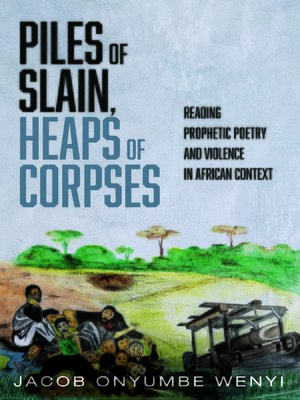Piles of Slain, Heaps of Corpses
ebook ∣ Reading Prophetic Poetry and Violence in African Context
By Jacob Onyumbe Wenyi

Sign up to save your library
With an OverDrive account, you can save your favorite libraries for at-a-glance information about availability. Find out more about OverDrive accounts.
Find this title in Libby, the library reading app by OverDrive.



Search for a digital library with this title
Title found at these libraries:
| Library Name | Distance |
|---|---|
| Loading... |
Piles of Slain, Heaps of Corpses reads the violence in the book of Nahum against the background of the war in the Democratic Republic of the Congo and tries to show how this violent book can be therapeutic and transformative for wounded communities. Here Jacob Onyumbe views Nahum through four scholarly lenses: poetic analysis, study of Assyrian iconography related to eighth- and seventh-century Judah, ethnographic research among survivors of war in the Democratic Republic of the Congo, and modern studies on the impact of war trauma on communities of survivors. He argues that Nahum uses lyric poetry so as to evoke in seventh-century BCE Judahite audiences the memory of war and destruction at the hands of the Assyrians. The prophet uses poetry to evoke (rather than narrate) in order to bring comfort to his audience by revealing the powerful presence of God in the conditions of traumatic violence. Viewed thus, the book of Nahum cannot be dismissed (as has commonly been the case among both scholars and general readers) as irrelevant or merely vindictive. On the contrary, this book—with its depiction of a vengeful God and repulsive war scenes—is essential, especially for traumatized communities.







